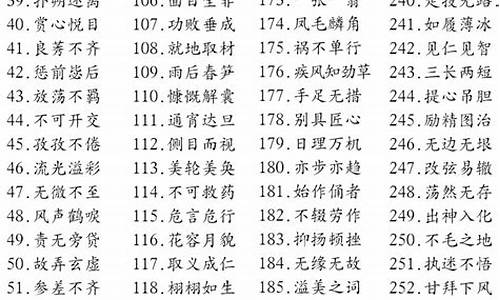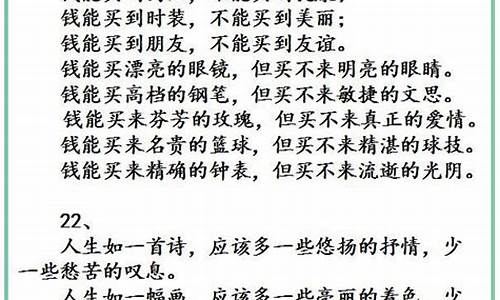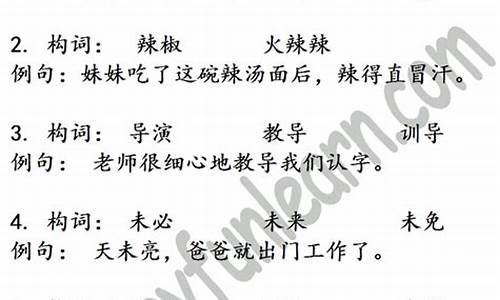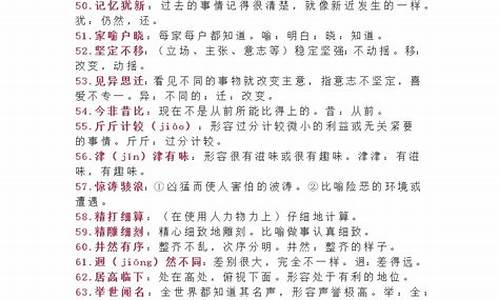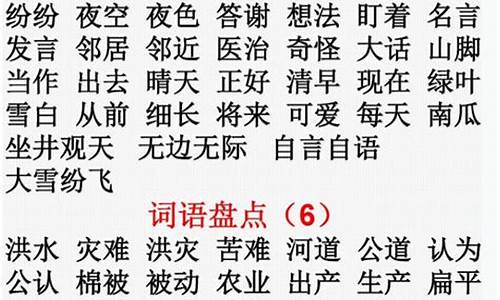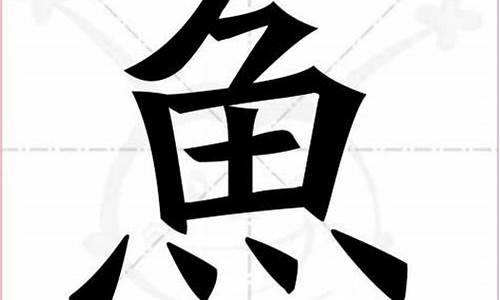borax是什么意思_borax
1.主要矿物描述
2.求玻璃生产方面的英文资料,非常感谢 !
3.硼酸盐矿物
4.多贝尔溶液又称什么具有什么什么作用
5.硼酸化学式
6.求铍硼的发现史\特性\及所有有关知识

小苏打可以代替硼砂。
小苏打
碳酸氢钠(NaHCO?)(Sodium Bicarbonate)。俗称小苏打。白色细小 晶体,在水中的溶解度小于?碳酸钠。它也是一种工业用化学品,固体50℃以上开始 逐渐分解生成碳酸钠、 二氧化碳和水,270℃时完全分解。碳酸氢钠是?强碱与?弱酸中和后生成的酸式盐,溶于水时呈现?弱碱性。此特性可使其作为食品制作过程中的?膨松剂。碳酸氢钠在作用后会残留碳酸钠,使用过多会使成品有碱味。
性质:碳酸氢钠为白色晶体,或不透明单斜晶系细微结晶。比重2.15。无臭、无毒、味咸,可溶于水?碳酸氢钠(2),微溶于乙醇。25℃时溶于10份水,约18℃时溶于12份水。其水溶液因 水解而呈微碱性,常温中性质稳定,受热易分解,在50℃以上逐渐潮解,在270℃时完全失去二氧化碳,在干燥空气中无变化,在潮湿空气中缓慢潮解。
硼砂
硼砂或称四硼酸钠,分子式Na2B4O7.10H2O,是非常重要的含硼矿物及硼化合物。通常为含有无色晶体的白色粉末,易溶于水。硼砂有广泛的用途,可用作清洁剂、化妆品、杀虫剂,也可用于配置缓冲溶液和制取其他硼化合物等。硼砂常指四硼酸钠的十水合物,即Na2B4O7.10H2O,但市售硼砂往往已经部分风化。
性质:无色半透明晶体或白色结晶粉末。无臭,味咸。比重1.73。380℃时失去全部结晶水。易溶于水和甘油中,微溶于酒精。水溶液呈弱碱性。硼砂在空气可缓慢风化。熔融时成无色玻璃状物质。硼砂有杀菌作用,口服对人有害。
沸点: 1575℃
熔点: 约880℃
中文名称: 硼砂,四硼酸钠(十水),月石砂,黄月砂,硼砂(药用)十水四硼酸钠,月石砂,四硼酸钠
英文名称: Borax,Sodium tetraborate,decahydrate,sodium borate, decahydrate,antipyonin,borascu
主要矿物描述
硼砂的网络解释是:硼砂(矿物)硼砂,一般写作Na2B4O7·10H2O,是非常重要的含硼矿物及硼化合物。通常为含有无色晶体的白色粉末,易溶于水。硼砂有广泛的用途,可用作清洁剂、化妆品、杀虫剂,也可用于配置缓冲溶液和制取其他硼化合物等。市售硼砂往往已经部分风化。硼砂毒性较高,世界各国多禁用为食品添加物。人体若摄入过多的硼,会引发多脏器的蓄积性中毒。
硼砂的网络解释是:硼砂(矿物)硼砂,一般写作Na2B4O7·10H2O,是非常重要的含硼矿物及硼化合物。通常为含有无色晶体的白色粉末,易溶于水。硼砂有广泛的用途,可用作清洁剂、化妆品、杀虫剂,也可用于配置缓冲溶液和制取其他硼化合物等。市售硼砂往往已经部分风化。硼砂毒性较高,世界各国多禁用为食品添加物。人体若摄入过多的硼,会引发多脏器的蓄积性中毒。结构是:硼(左右结构)砂(左右结构)。注音是:ㄆㄥ_ㄕㄚ。词性是:名词。拼音是:péngshā。
硼砂的具体解释是什么呢,我们通过以下几个方面为您介绍:
一、词语解释点此查看详细内容
硼砂péngshā。(1)硼的化合物。白色或无色结晶,溶于热水,用于制造光学玻璃、医药、焊剂、试剂、搪瓷等。
二、引证解释
⒈矿物名。中药叫月石。白色柱状晶体,溶于热水,用于制造光学玻璃、医药、焊剂、试剂、搪瓷等。引明李时珍《本草纲目·金石四·蓬砂》:“硼砂生西南番,有黄白二种:西者白如明矾,南者黄如桃胶,皆是炼结成,如硇砂之类。”
三、国语词典
用碳酸钠中和硼酸的水溶液,所产生白色或无色斜方柱形结晶体。亦有天然生成者。常用作防腐剂或制造光学玻璃、医药、焊剂、试剂、搪瓷等。词语翻译英语borax德语Borax(S,Geol)_法语borax
关于硼砂的成语
抟砂弄汞飞砂走石飞砂转石砂里淘金眼不着砂炊砂作饭打破砂锅璺到底打破砂锅问到底
关于硼砂的词语
抟砂弄汞七返灵砂飞砂走石打破砂锅搏砂弄汞飞砂转石走石飞砂飞砂扬砾砂里淘金扬砂走石
关于硼砂的造句
1、磺胺嘧啶,磺胺噻唑,硼砂,氢氧化钠。
2、本发明选用的原料药是绿矾和硼砂,将原料药粉碎后开水调和擦于患处即可。
3、和硼砂混合可以做成很好的洗涤粉。
4、利用铸渗技术试制球磨机衬板,研究不同干燥温度及硼砂作黏接剂对铸渗质量的影响。
5、产品成份为锆英砂、石灰石、磷酸钙、氟化钙、硼砂。
点此查看更多关于硼砂的详细信息
求玻璃生产方面的英文资料,非常感谢 !
硼镁铁矿(Ludwigite)((Mg,Fe)2Fe3+[BO3]O2)
[化学成分]MgO2%,B2O316%,FeO+Fe2O357%;硼镁铁矿中Mg2+和Fe2+间为完全类质同像,据Mg2+含量可分为两个亚种:镁硼镁铁矿和铁硼镁铁矿。可有少量Al3+代替Fe3+(≤11%)。
[结晶形态]斜方晶系。晶体呈长柱状、针状、纤维状、毛发状,并呈放射状(篙束状)、纤维状、粒状、致密块状集合体。
[物理性质]暗绿色至黑色(随Fe含量增大颜色变深);条痕浅黑绿色至黑色;光泽暗淡,纤维状体的新鲜面上有丝绢光泽;不透明(含镁高者稍透明)。无解理。硬度5.5~6。相对密度3.6~4.7(含Fe量高,相对密度增大)。粉末具弱磁性。
[成因及产状]硼镁铁矿为接触交代作用的产物,产于蛇纹石化白云质大理岩或镁矽卡岩中,常与磁铁矿、硅镁石族矿物及金云母、镁橄榄石、硼镁石等共生。在热液影响下,硼镁铁矿在不同程度上发生变化,其产物一般为纤维状硼镁石和磁铁矿。
[鉴定特征]以颜色、条痕深,相对密度、硬度均较大,常呈篙束状集合体为特征。在空气中烧之变成红色。溶于浓H2SO4,加几滴酒精稍加热,用火点燃火焰呈鲜艳的绿色(B的反应)。
[主要用途]提炼硼的矿物原料。
硼砂(Borax)(Na[B4O5(OH)4]·8H2O)
[化学组成]Na2O16.26%,B2O336.51%,H2O47.23%。
[结晶形态]单斜晶系。晶体呈短柱状(图15-45),集合体呈粒状或土状。
[物理性质]晶体透明无色或浅灰色,其细粒集合体呈白色或淡蓝绿色;白色条痕,玻璃光泽。硬度2~2.5。解理平行{100}完全,{110}中等,{010}不完全。性脆,断口呈贝壳状。相对密度1.73。易溶于水(0℃时每百毫升水能溶2.01g);烧之易熔成透明小球。
图15-45硼砂晶形
[成因产状]为最常见的硼酸盐矿物。主要产于干旱地区盐湖沉积中,与石盐、天然碱以及其他含硼矿物共生。亦产于温泉沉积物中。在干燥空气中易失水变为白色粉状的三方硼砂Na2[B4O5(OH)]·3H2O。
[鉴定特征]无色透明或浅色、硬度低、密度小、易熔成透明玻璃球等,可借焰色反应试B(见硼镁铁矿描述)。
[主要用途]为硼的主要矿物原料。
学习指导
常见的硼酸盐类矿物不多、分布也不广,只要求一般了解即可。
复习思考题
1.硼有什么用处?为什么现在对硼矿物比较重视?
2.用什么方法可以检出矿物中的硼?
硼酸盐矿物
Glass is a combination of sand, flint, spar, or some other silicious substances, with one or other of the fixed alkalies, and in some cases with a metallic oxide. Of the alkalies, soda is commonly preferred; and of the silicious substances, white sand is most in repute at present, as it requires no preparation for coarse goods, while mere washing in water is sufficient for those of a finer quality. The metallic oxide usually employed, is litharge, or some other preparation of lead. Iron is used in bottle-glass.
The silicious matter should be fused in contact with something called a flux. The substances proper for this purpose are lead, borax, arsenic, nitre, or any alkaline matter. The lead is used in the state of red-lead; and the alkalies are soda, pearlash, sea-salt, and wood-ashes. When red-lead is used alone, it gives the glass a yellow cast and requires the addition of nitre to correct it. Arsenic, in the same manner, if used in excess, is apt to render the glass milky. For a perfectly transparent glass, the pearlash is found much superior to lead; perhaps better than any other flux, except it be borax, which is too expensive to be used, except for experiments, or for the best looking-glasses.
The materials for making glass must first be reduced to powder, which is done in mortars or by horse mills. After sifting out the coarse parts, the proper proportions of silex and flux are mixed together, and put into the calcining furnace, where they are kept in a moderate heat for 5 or 6 hours, being frequently stirred about during the process. When taken out the matter is called frit. Frit is easily converted into glass by only pounding it, and vitrifying it in the melting pots of the glass furnace; but in making fine glass, it will sometimes require a small addition of flux to the frit to correct any fault. For, as the flux is the most expensive article, the manufacturer will rather put too little at first than otherwise, as he can remedy this defect in the melting pot. The heat in the furnace must be kept up until the glass is brought to a state of perfect fusion; and during this process any scum which arises must be removed by ladles. When the glass is perfectly melted, the glass-blowers commence their operations.
For the best flint-glass, 120 lbs. of white sand, 50 lbs. of red-lead, 40 lbs. of the best pearlash, 20 lbs. of nitre, and 5 oz. of manganese; if a pound or two of arsenic be added, the composition will fuse much quicker, and with a lower temperature.
For a cheaper flint-glass, take 120 lbs. of white sand, 35 lbs. of pearlash, 40 lbs. of red-lead, 13 lbs. of nitre, 6 lbs. of arsenic, and 4 oz. of magnesia.
This requires a long heating to make clear glass, and the heat should be brought on gradually, or the arsenic is in danger of subliming before the fusion commences. A still cheaper composition is made by omitting the arsenic in the foregoing, and substituting common sea-salt.
For the best German crystal-glass, take 120 lbs. of calcined flints or white sand, the best pearlash, 70 lbs, saltpetre, 10 lbs.; arsenic, 1/2 lb., and 5 oz. of manganese. Or, a cheaper composition for the same purpose is 120 lbs. of sand or flints, 46 lbs. of pearlash, 7 lbs of nitre, 6 lbs. of arsenic, and 5 oz. of manganese. This will require a long continuance in the furnace; as do all others where much of the arsenic is employed.
For looking-glass plates washed white sand, 60 lbs.; purified pearlash, 25 lbs.; nitre, 15 lbs.; and 7 lbs. of borax. If properly managed, this glass will be colorless. But if it should be tinged by accident, a trifling quantity of arsenic, and an equal quantity of manganese, will correct it; an ounce of each may be tried first, and the quantity increased if necessary.
The ingredients for the best crown-glass must be prepared in the same manner as for looking-glasses, and mixed in the following proportions: 60 lbs. of white sand, 30 lbs. of pearlash, and 15 lbs. of nitre, 1 lb. of borax, and 1/2 lb. of arsenic.
The composition for common green window-glass is, 120 lbs. of white sand, 30 lbs. of unpurified pearlash; woodashes, well burnt and sifted, 60 lbs.; common salt, 20 lbs.; and 5 lbs. of arsenic.
Common green bottle-glass is made from 200 lbs. of wood-ashes and 100 lbs. of sand, or 170 lbs. of ashes, 100 lbs. of sand, and 50 lbs. of the slag of an iron furnace; these materials must be well mixed.
The materials employed in the manufacture of glass, are by chemists reduced to three classes, namely, alkalies, earths, and metallic oxides.
The fixed alkalies may be employed indifferently; but soda is preferred in this country. The soda of commerce is usually mixed with common salt, and combining with carbonic acid. It is proper to purify it from both of these foreign bodies before using it. This, however, is seldom done.
The earths are silica (the basis of flints), lime, and sometimes a little alumina (the basis of clay). Silica constitutes the basis of glass. It is employed in the state of fine sand or flints; and sometimes for making very fine glass, rock crystal is employed. When sand is used, it ought, if possible, to be perfectly white, for when it is colored with metallic oxides, the transparency of the glass is injured. Such sand can only be employed for very coarse glasses. It is necessary to free the sand from all the loose earthy particles with which it may be mixed, which is done by washing it well with water.
Lime renders glass less brittle, and enables it to withstand better the action of the atmosphere. It ought in no case to exceed the 20th part of the silica employed, otherwise it corrodes the glass pots. This indeed may be prevented by throwing a little clay into the melted glass; but in that case a green glass only is oained.
The metallic oxides employed are the red oxide of lead or litharge, and the white oxide of arsenic.
The red oxide of lead, when added in sufficient quantity, enters into fusion with silica, and forms a milky hue like the dial-plate of a watch. When any combustible body is present, it is usual, in some manufactories, to add a little white oxide of arsenic. This supplying oxygen, the combustible is burnt, and flies off, while the revived arsenic is at the same time volatized.
There are several kinds of glass adapted to different uses. The best and most beautiful are the flint and the plateglass. These, when well made, are perfectly transparent and colorless, hey and brilliant. They are composed of fixed alkali, pure siliceous sand, calcined flints and litharge, in different proportions. The flint glass contains a large quantity of oxide of lead, which by certain processes is easily separated. The plate glass is poured in the melted state upon a table covered with copper. The plate is cast 1/2 an inch thick or more, and is ground down to a proper degree of thickness, and then polished.
Crown-glass, that used for windows, is made without lead, chiefly of fixed alkali fused with silicious sand, to which is added some black oxide of manganese, which is apt to give the glass a tinge of purple.
Bottle-glass is the coarsest and cheapest kind, in this little or no fixed alkali enters the composition. It consists of alkaline earth and oxide of iron combined with alumina and silica. In this country it is composed of sand and the refuse of the soap-boiler, which consists of the lime employed in rendering this alkali caustic, and of the earthy matters with which the alkali was contaminated. The most fusible is flint-glass, and the least fusible is bottleglass.
多贝尔溶液又称什么具有什么什么作用
硼酸盐矿物是金属阳离子,其中最主要的是Mg2+、Ca2+、Na+、Fe2+和Fe3+,与硼酸根相化合而形成的含氧盐矿物。目前已知的硼酸盐矿物约有130余种,然而在自然界常见的仅10种左右,并能聚集成有工业意义的硼矿床。
(一)硼镁铁矿族
本族包括硼镁铁矿和硼铁矿,两者间构成完全类质同象系列。其中以硼镁铁矿为常见。
硼镁铁矿 Ludwigite(Mg,Fe2+)2Fe3+[BO3]O2
斜方晶系。晶体呈柱状或针状。通常呈纤维状、放射状、粒状、致密块状集合体。
墨绿色至黑色,颜色随成分中Fe含量增大而变深;条痕浅黑绿色至黑色;光泽暗淡。纤维状集合体者呈丝绢光泽;微透明至不透明。硬度5.5~6;无解理。密度3.6g/cm3。粉末具弱磁性。
我国的硼镁铁矿主要产于接触交代成因的镁质矽卡岩或不同程度的蛇纹石化白云质大理岩中,常与磁铁矿、硅镁石及金云母、镁橄榄石和硼镁石等共生。
★以深的颜色和条痕色,暗淡光泽,硬度和产状特征可与电气石相区别。
提炼硼的矿物原料。
(二)硼砂族
硼砂 Borax Na2[B4O5(OH)4]·8H2O
单斜晶系。单晶体常呈{100}板状或沿Z轴延伸的短柱状。集合体常呈粒状或土块状。
晶体无色透明,白色或微带绿、蓝、**调等;玻璃光泽,土状者暗淡。解理平行{100}完全,平行{110}中等,平行{010}不完全;硬度2~2.5;性极脆,密度1.66~1.72g/cm3。易溶于水,微带甜味。烧时膨胀,易熔成透明的玻璃状体。
硼砂是最常见的含水硼酸盐矿物之一,主要产于干旱地区的盐湖或硼湖的蒸发、干涸沉积物中,与钠硼解石、石盐、无水芒硝、石膏等矿物共生。我国西藏拉萨附近的硼湖沉积矿床是世界上著名的硼砂产区之一。
★以其白色,易溶于水,具甜味,烧时膨胀熔成玻璃状体为鉴定特征。
提炼硼的最重要矿物原料。硼是重要的化工原料,用于玻璃、玻璃纤维、防腐剂、油漆、涂料、搪瓷制品和洗涤剂等领域。硼的化合物是航空和军事装甲的重要防护材料。硼的氢化物也是液体火箭推进剂常用的燃烧剂等。
硼酸化学式
多贝尔溶液又称复方硼砂液,具有洁、消炎、杀菌、收敛、止痛作用。
方硼砂液(boraxcompoundsolution):又名多贝尔(Dobell)液。作用清洁、消炎、杀菌、收敛、止痛作用,并使局部舒适。适用范围急、慢性咽炎,及扁桃体炎。
注意事项只能含漱,不可吞下。含漱时应头后仰,含漱后将药物吐出。
求铍硼的发现史\特性\及所有有关知识
硼酸 化学式H3BO3或B(OH)3,分子量61.83
硼,BORON,源自硼砂borax和碳carbon,1808年发现,硼是一种非金属,以硼砂(四硼酸钠)和硼酸著称,后者是起清洁杀菌作用,对眼睛有益处的一种酸。美国的各种工业每年对硼的需要量,都在240,000t以上。在农业上,硼即可制成肥料,也是一种很好的除草剂。
尽管人们很久以前就和硼打交道,如古代埃及制造玻璃时已使用硼砂作熔剂,古代炼丹家也使用过硼砂,但是硼酸的化学成分19世纪初还是个谜。
1808年,英国化学家戴维(Sir Humphry Dy, 1778—1829)在用电解的方法发现钾后不久,又用电解熔融的三氧化二硼的方法制得棕色的硼。同年法国化学家盖-吕萨克(Joseph-Louis Gray-Lussac,1778—1850)和泰纳(Louis Jacques Thenard,1777—1857)用金属钾还原无水硼酸制得单质硼。
硼被命名为Boron,它的命名源自阿拉伯文,原意是“焊剂”的意思。说明古代阿拉伯人就已经知道了硼砂具有熔融金属氧化物的能力,在焊接中用做助熔剂。硼的元素符号为B,中译名为硼。
B不与盐酸作用,但与热浓H2SO4,热浓HNO3作用生成硼酸:
2B+3H2SO4(浓)==2B(OH)3+3SO2↑
B+3HNO3(浓)==B(OH)3+ 3NO2↑
硼酸的性质
(1)H3BO3是白色片状晶体,微溶于水(273K时溶解度为6.35g/(100gH2O)),加热时,由于晶体中的部分氢键断裂,溶解度增大(373K时溶解度为27.6 g)(100gH2O))。
(2)H3BO3是个一元弱酸,Ka=5.8×10-10,它之所以有弱酸性并不是它本身电离出质子H+,而是由于B是缺电子原子,它加合了来自H2O分子中OH-的(其中O原子上的孤对电子对向B原子的空的P轨道上配位)而释放出H+离子:
(3)硼酸的这种电离方式表现出了硼化合物是缺电子特点。所以硼酸是一个典型的路易士酸,它的酸性可因加入甘露醇或甘油(丙三醇)而大为增强,例如硼酸溶液的pH≈5~6,加入甘油后,pH≈3~4。
表现出一元酸的性质,可用强碱来滴定。
(4)硼酸和甲醇或乙醇在浓H2SO4存在的条件下,生成硼酸酯,硼酸酯在高温下燃烧挥发,产生特有的绿色火焰,此反应可用于鉴别硼酸,硼酸盐等化合物。
(5)硼酸加热脱水分解过程中,先转变为偏硼酸HBO3,继续加热变成B2O3。
(6)在同极强的酸性氧化物(如P2O5或AsO5)或酸反应时, H3BO3被迫表现出弱碱性:
分类: 理工学科
解析:
硼的发现史
尽管人们很久以前就和硼打交道,如古代埃及制造玻璃时已使用硼砂作熔剂,古代炼丹家也使用过硼砂,但是硼酸的化学成分19世纪初还是个谜。
1808年,英国化学家戴维(Sir Humphry Dy, 1778—1829)在用电解的方法发现钾后不久,又用电解熔融的三氧化二硼的方法制得棕色的硼。同年法国化学家盖-吕萨克(Joseph-Louis Gray-Lussac,1778—1850)和泰纳(Louis Jacques Thenard,1777—1857)用金属钾还原无水硼酸制得单质硼。硼被命名为Boron,它的命名源自 *** 文,原意是“焊剂”的意思。说明古代 *** 人就已经知道了硼砂具有熔融金属氧化物的能力,在焊接中用做助熔剂。
chemfans/05huaxveshihua/B
硼
硼,原子序数5,原子量10.811。约公元前200年,古埃及、罗马、巴比伦曾用硼沙制造玻璃和焊接黄金。1808年法国化学家盖·吕萨克和泰纳尔分别用金属钾还原硼酸制得单质硼。硼在地壳中的含量为0.001%。天然硼有2种同位素:硼10和硼11,其中硼10最重要。
硼为黑色或银灰色固体。晶体硼为黑色,熔点约2300°C,沸点2550°C,密度2.34克/厘米?,硬度仅次于金刚石,较脆。
硼在室温下比较稳定,即使在盐酸或氢氟酸中长期煮沸也不起作用。硼能和卤组元素直接化合,形成卤化硼。硼在600~1000°C可与硫、锡、磷、砷反应;在1000~1400°C与氮、碳、硅作用,高温下硼还与许多金属和金属氧化物反应,形成金属硼化物。这些化合物通常是高硬度、耐熔、高电导率和化学惰性的物质,常具有特殊的性质。
硼的应用比较广泛。硼与塑料或铝合金结合,是有效的中子屏蔽材料;硼钢在反应堆中用作控制棒;硼纤维用于制造复合材料等。
元素名称:硼
元素原子量:10.81
元素类型:非金属
原子序数:5
元素符号:B
元素中文名称:硼
元素英文名称:Boron
相对原子质量:10.81
核内质子数:5
核外电子数:5
核电核数:5
质子质量:8.365E-27
质子相对质量:5.035
所属周期:2
所属族数:IIIA
摩尔质量:11
氢化物:BH3
氧化物:B2O3
最高价氧化物化学式:B2O3
密度:2.34
熔点:2300.0
沸点:2550.0
电子排布:2s2 2p1
核外电子排布:2,3
颜色和状态:固体
原子半径:1.17
常见化合价:+3
发现人:戴维、盖吕萨克、泰纳 发现年代:1808年
发现过程:
1808年,英国的戴维和法国的盖吕萨克、泰纳,用钾还原硼酸而制得硼。
元素描述:
它是最外层少于4个电子的仅有的非金属元素。其单质有无定形和结晶形两种。前者呈棕黑色到黑色的粉末。后者呈乌黑色到银灰色,并有金属光泽。硬度与金刚石相近。无定形的硼密度2.3克/厘米3,(25-27℃);晶形的硼密度2.31克/厘米3,熔点2300℃,沸点2550℃,化合价3。在室温下无定形硼在空气中缓慢氧化,在800℃左右能自燃。硼与盐酸或氢氟酸,即使长期煮沸,也不起作用。它能被热浓硝酸和重铬酸钠与硫酸的混合物缓慢侵蚀和氧化。过氧化氢和过硫酸铵也能缓慢氧化结晶硼。上述试剂与无定形硼作用激烈。与碱金属碳酸盐和氢氧化物混合物共熔时,所有各种形态的硼都被完全氧化。氯、溴、氟与硼作用而形成相应的卤化硼。约在600℃硼与硫激烈反应形成一种硫化硼的混合物。硼在氮或氨气中加热到1000℃以上则形成氮化硼,温度在1800-2000℃是硼和氢仍不发生反应,硼和硅在2000℃以上反应生成硼化硅。在高温时硼能与许多金属和金属氧化物反应,生成金属硼化物。
元素来源:在自然界中,硼只以其化合物形式存在着(像在硼砂、硼酸中,在植物和动物中只存在有痕量的硼),通常由电解熔融的氟硼酸钾和氯化钾或热还原它的其他化合物(如氧化硼)制得
制备方法有:硼的氧化物用活泼金属热还原;用氢还原硼的卤化物;用碳热还硼砂;电解熔融硼酸盐或其他含硼化合物;热分解硼的氢化合物上述方法所得初产品均应真空除气或控制卤化,才可制得高纯度的硼。
元素用途:它主要用于冶金(如为了增加钢的硬度)及核子学中,因为它吸收中子能力强
由于硼在高温时特别活泼,因此被用来作冶金除气剂、锻铁的热处理、增加合金钢高温强固性,硼还用于原子反应堆和高温技术中。棒状和条状硼钢在原子反应堆中广泛用作控制棒。由于硼具有低密度、高强度和高熔点的性质,可用来制作导弹的火箭中所用的某些结构材料。硼的化合物在农业、医药、玻璃工业等方面用途很广。
元素资料:
天然含硼的化合物硼砂(Na2B4O7·10H2O)早为古代医药学家所知悉。我国 *** 是世界上盛产硼砂的地方。
1702年法国医生霍姆贝格首先从硼砂制得硼酸,称为salsedativum,即镇静盐。1741年法国化学家帕特指出,硼砂与硫酸作用除生成硼酸外,还得到硫酸钠。1789年拉瓦锡把硼酸基列入元素表。1808年英国化学家戴维和法国化学家盖吕萨克、泰纳各自获得单质硼。硼的拉丁名称为 boracium,元素符号为B。这一词来自borax(硼砂)。
baike.baidu/view/20686
声明:本站所有文章资源内容,如无特殊说明或标注,均为采集网络资源。如若本站内容侵犯了原著者的合法权益,可联系本站删除。


